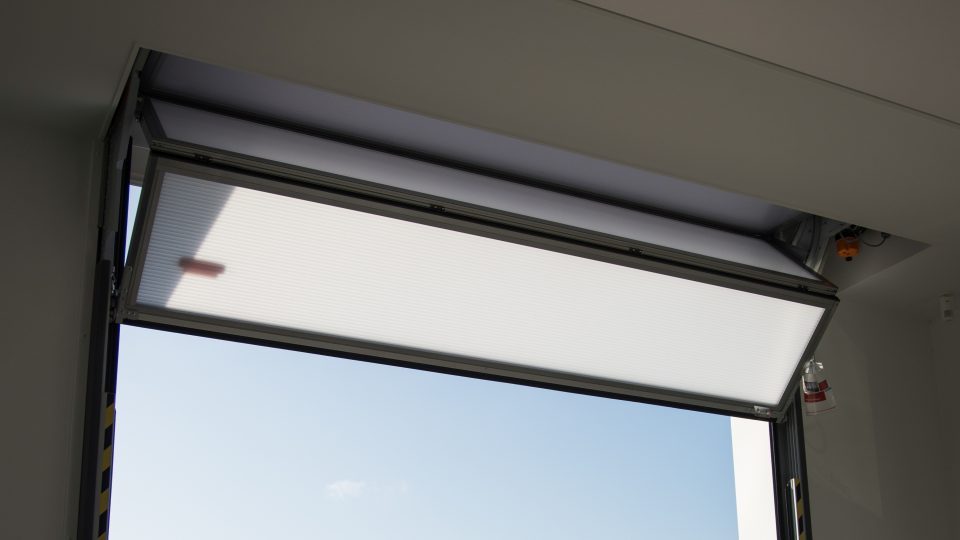Installing sectional folding doors can transform your space by enhancing accessibility, security, and efficiency. These doors, which fold neatly into sections, are ideal for industrial, commercial, and residential settings, offering a modern solution that saves space while adding functionality. Proper installation is key to ensuring these doors operate smoothly and provide long-term value.
Step 1: Gather the Required Tools and Materials
Before you begin installing sectional folding doors, it’s essential to gather all necessary tools and materials. Having everything prepared will streamline the installation process and help you avoid delays. Common tools and materials you’ll need include:
- Measuring tape
- Spirit level
- Drill and drill bits
- Screwdriver
- Wrench set
- Hammer
- Mounting brackets and screws
- Tracks and rollers
- Weatherstripping (if included)
- Safety gear (gloves and safety glasses)
Ensure you have the installation manual provided by the door manufacturer, as it will contain specific details and instructions tailored to your sectional folding door model.
Step 2: Prepare the Installation Area
Proper preparation of the installation area is crucial for a smooth and secure installation. Start by inspecting the area around the doorway to ensure there are no obstacles or damage that could affect the door’s operation. Measure the height and width of the opening to confirm that it matches the dimensions of your sectional folding doors.
Next, check the ceiling clearance to ensure there is enough space for the door sections to fold and move freely. If you’re installing the doors in an area with low overhead space, verify that the sectional folding doors you’ve purchased are suitable for this setup.
Step 3: Install the Mounting Brackets
Once the area is prepared, the next step is to install the mounting brackets, which serve as the foundation for the door’s tracks. Start by marking the positions where the brackets will be installed, making sure they align evenly on both sides of the doorway. Use a spirit level to confirm that the brackets are straight, as misaligned brackets can cause the door to operate improperly.
Drill holes where you’ve marked, then secure the mounting brackets to the wall with screws. Ensure that the brackets are tightly fastened, as they’ll support the weight of the tracks and the doors. Double-check that both brackets are level before moving on to the next step.
Step 4: Install the Tracks
With the brackets securely in place, it’s time to install the tracks that guide the movement of the sectional folding doors. Start by attaching the vertical tracks to the mounting brackets on each side of the doorway. Make sure the tracks are level and parallel to each other, as this will prevent issues with the door’s movement.
Once the vertical tracks are secure, connect the horizontal tracks that will guide the doors as they fold overhead. In some installations, you may need to connect angled brackets to ensure a smooth transition between the vertical and horizontal tracks. Tighten all screws and bolts, ensuring that the entire track system is stable and aligned correctly.
Step 5: Assemble the Door Panels
Next, assemble the panels of the sectional folding doors. Most sectional doors come in separate panels that need to be connected to form the full door. Lay the panels on the ground in the correct order, following the manufacturer’s instructions to ensure they’re in the proper sequence.
Secure the hinges that connect the panels, typically located along the top and bottom edges of each panel. This allows the panels to fold and move smoothly along the tracks. Attach any weatherstripping provided, as this will help seal the door against drafts and improve insulation.
Step 6: Install Rollers and Attach Panels to the Tracks
Once the panels are assembled, install the rollers on each panel. These rollers will allow the panels to slide smoothly along the tracks. Attach the rollers securely according to the instructions, making sure they’re aligned for even movement.
Starting from the bottom panel, guide each panel into the track system, working your way up to the top panel. As you insert each panel, make sure it moves freely within the tracks. Secure each panel to the track using the fasteners provided, following the manufacturer’s guidelines to ensure proper spacing between the panels.
Step 7: Attach the Spring System
The spring system is essential for the operation of sectional folding doors, as it counterbalances the door’s weight and allows for smooth opening and closing. Install the spring system according to the manufacturer’s instructions, as this component can vary depending on the type and weight of the door.
Carefully attach the springs to the brackets and ensure they’re adjusted correctly to support the door’s weight. Springs are under high tension, so use caution during this step. If you’re unfamiliar with spring systems, consider consulting a professional installer for this part, as mishandling springs can be dangerous.
Step 8: Install the Door Opener (Optional)
If your sectional folding doors come with an automated door opener, now is the time to install it. The door opener will usually be mounted to the ceiling, directly above the doorway. Follow the instructions provided by the opener’s manufacturer, securing it with the appropriate screws and brackets.
Connect the opener’s arm to the top panel of the door, ensuring it’s aligned correctly. Test the opener to confirm it moves the door smoothly and stops at the desired open and closed positions. Make any necessary adjustments to the opener’s settings to ensure safe and efficient operation.
Step 9: Test the Door’s Operation
Once all components are in place, it’s time to test the sectional folding doors to ensure they function correctly. Open and close the door manually a few times, observing the movement along the tracks. The door should move smoothly, without any resistance or misalignment.
If you installed an automatic opener, test it as well, confirming that the door opens and closes fully and stops safely at each end. Check that the door seals properly when closed, with no gaps that could allow drafts or moisture to enter.
Step 10: Make Final Adjustments and Secure All Components
After testing, make any necessary adjustments to ensure optimal performance. Tighten any loose screws, bolts, or brackets, and adjust the tracks if needed to prevent any potential issues.
Double-check the alignment of all components, from the tracks to the rollers and hinges. Inspect the weatherstripping to confirm it’s securely attached and provides a tight seal. By taking the time to make these final adjustments, you’ll ensure that your sectional folding doors operate efficiently and provide the security and insulation benefits they’re designed for.
Step 11: Routine Maintenance Tips
To keep your sectional folding doors functioning smoothly over time, establish a routine maintenance schedule. Lubricate the tracks, rollers, and hinges regularly to prevent wear and ensure smooth movement. Check the spring tension periodically, as it may need adjustment after extended use. Clean the tracks and panels to remove any dirt or debris that could hinder the door’s operation.
Regular maintenance will prolong the life of your doors and prevent costly repairs, ensuring that they continue to provide secure and efficient access for your business.
Conclusion
Installing sectional folding doors may seem like a challenging task, but by following these steps, you can achieve a smooth and successful installation. These doors are a modern, space-saving solution for industrial and commercial spaces, offering durability, security, and efficient access. With proper installation and regular maintenance, sectional folding doors can provide long-lasting benefits for your facility. Whether you’re enhancing security, improving accessibility, or optimising workflow, sectional folding doors are an excellent choice that meets the demands of modern industrial environments.












